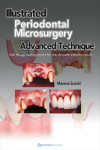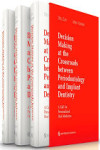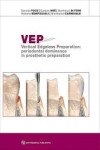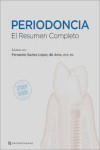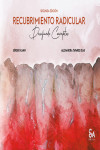CARIES MANAGEMENT - SCIENCE AND CLINICAL PRACTICE
Meyer-Lueckel, H. - Paris, S. - Ekstrand, K.
Datos técnicos
- ISBN 9783131547118
- Año Edición 2013
- Páginas 456
- Idioma Inglés
Sinopsis
The book is essentially made up of 2 parts. Part 1 explains the scientific fundamentals and treatment principles. All topics are covered, from the reasons why caries develops to primary minimal-invasive treatment, contains graphs, illustrations, tables and microscopic images. Part two (chapters 25 and 26) uses actual case studies to describe the methodology, including clinical images.
Sales Hooks
Shifting to the new paradigm of “heal and seal” rather than the old “drill and fill” – prevention instead of intervention
Covers the science behind the disease with recommendations for treatments, starting at the microscopic level
Newest treatment techniques, including adhesion technology, fissure sealing and infiltration, and more
Non-invasive, micro invasive, minimal invasive techniques.
International team of authors (USA, UK, Brazil, Australia, Germany...)
Contents
Ecology of the oral cavity
Aetiology and pathogenesis of caries
Histological and clinical appearance of caries
Paradigm shift in cariology
Visual-tactile detection and assessment
Radiographic and other diagnostic methods
Caries risk assessment and prediction
Epidemiology of caries and non-carious defects
From diagnosis to therapy
Biofilm Management
The Role of Nutrition in the Caries Process
Influencing de- and remineralisation by fluorides & calcium phosphates
Oral health promotion: Implementation of non-invasive interventions control the caries process
Basics in Adhesion Technology
FissureSealing 16
Sealing of proximal surfaces
Caries infiltration
How much caries do we have to remove?
Minimal-invasive therapy with tooth-colored resin restorative materials
Decision-making in managing the caries process
How to maintain teeth sound: an individualized population strategy
Individualized caries management in paediatric dentistry
Future Trends in Caries Research
Diagnostics and documentation
Clinical cases of minimal interventional treatment concepts of caries in the permanent dentition
Clinical cases of minimal interventional treatment concepts of caries in young children
Otros libros que te pueden interesar
- ¿Quiénes somos?
- Gastos de envío
- Política de privacidad
- Políticas de devolución y anulación
- Condiciones Generales de contratación
- Contacto
2025 © Vuestros Libros Siglo XXI | Desarrollo Web Factor Ideas






